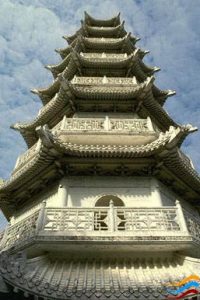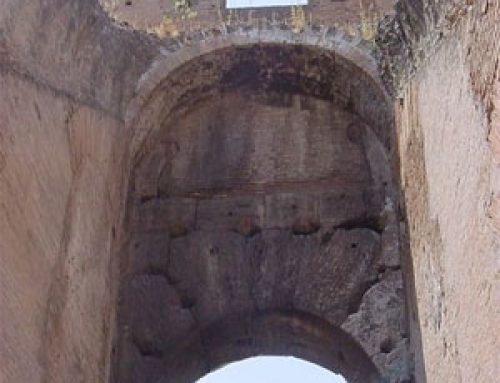
Song Dynasty pagoda (Hong Kong)
About 200 AD, near the end of the Han Dynasty, people in China began to hear about the new religion of Buddhism, which had started in India about 700 years earlier. Buddhists in China began to build special Buddhist buildings called pagodas which were like Indian Buddhist stupas. These buildings were not really for going inside. They were to keep sacred things in, like gold treasures and books of Buddhist prayers and pictures of the Buddha. These early Han Dynasty pagodas were all made of wood.
During the Three Kingdoms period, people sometimes carved pagodas into the sides of cliffs, so they could be made of stone without having to hold themselves up if there was an earthquake.
People went on building these pagodas from then on in all the dynasties, but they made changes in the style of the pagodas. In the T’ang Dynasty, around 500 AD, architects built fancier pagodas with eight sides, like the White Pagoda at Chengde or the West and East pagodas at Kunming.
During the Song Dynasty, about 1000 AD, people liked to see very tall, thin pagodas. Pagodas had tall spires on top to make them look even taller. These pagodas were also fancier than pagodas from the T’ang Dynasty – they had complicated wooden lattices all around them so they looked like they were made of lace and air, holding themselves up by magic.
We can compare these pagodas to minarets and church towers; early Muslims built the first minarets in West Asia in the late 600s AD; the earliest Christian church towers were in Syria in the 500s AD.




